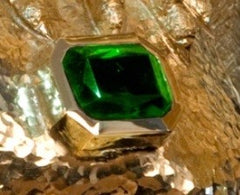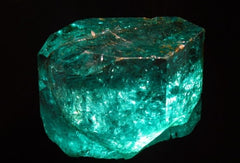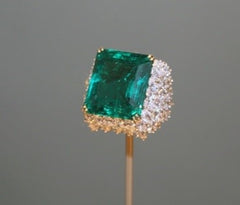May 30, 2019

Colombia is home to many famous mines, such as the Muzo and Chivor mines. They have produced some of the best emeralds ever historically mined in the world.
In the mid-16th century, Spanish conquistadors set out to explore the regions of Colombia known to have emeralds. Their goal was to take back rare and beautiful stones to Spain by ship for trade.
During their conquest, the Spaniards founded the Chivor mine. The emeralds from Chivor typically have a slightly bluish green color. Chivor had become “lost” for 200 years until a man named “Peter Rainier” (not the naval officer) came into the area, re-discovered the mine, and made the mine profitable again. He also fought off bandits to keep possession of the mine. Rainier later became a consultant for the Colombian government and helped with furthering the development of the Muzo emerald mine.
The famed Muzo mine has yielded some truly remarkable gemstones. Muzo stones can have a unique, intense, and very slightly yellowish green color that is something to behold. Some Muzo stones have inclusions called “jardin”, which is the French word for “garden”.
A well-known Spanish shipwreck, the Nuestra Señora de Atocha, was one of the most important finds of the last century. She was a treasure galleon that sunk during a storm in 1622. She was discovered in 1985 after 16 years of searching by treasure hunters, Mel and Deo Fisher. The discovery led to the finding of what they called, “Emerald City”. The pair had found 13,500 carats of emeralds that had been mined from the Muzo. In addition, there were coins and other treasures that were bound for Spain with a value of over $400 million dollars.
Out of all the emeralds found in the ship, the Atocha Star is the highest graded emerald at 25.87 carats. In 1992, it was cut down to 12.72 carats as a gift from Mel to Deo.
 The Atocha Star – Photo from Wikipedia
The Atocha Star – Photo from Wikipedia
One of the largest emeralds ever found is the Gachalá emerald from Colombia. It was found in 1967 and weighs a whopping 858 carats. Fortunately, Harry Winston, the famous New York jeweler, donated the emerald to the Smithsonian Institute in 1969. It can be seen in their permanent collection.
 The Gachalá Emerald – Photo from Wikipedia
The Gachalá Emerald – Photo from Wikipedia
Another famous emerald is the Chalk Emerald, which is an emerald cut emerald that weighs 37.82 carats.
The Chalk was owned by the royal rulers of the Baroda State in India, where it was worn by the Maharani Saheba in a necklace. She then passed it down to her son, the Maharajah Cooch Behar. In the 20th century, the emerald was recut from its original weight and then set into a ring designed by Harry Winston. His design has sixty pear-shaped diamonds, totaling approximately 15 carats, surrounding the emerald. It was purchased by Mr. and Mrs. Chalk who became the namesake of the emerald. Mr. Chalk was a highly successful entrepreneur who donated the ring to the Smithsonian Natural History Museum in 1972. Now it is part of the Smithsonian’s National Gem and Mineral Collection.
 The Chalk Emerald – Photo from Wikipedia
The Chalk Emerald – Photo from Wikipedia
Besides natural emeralds, there are also synthetic emeralds, which are optically, chemically and physically identical to natural emeralds. In 1935, Carroll Chatham successfully grew emerald crystals in his garage and became the first person to successfully create synthetic emeralds. These days, there are a few companies that commercially produce synthetic emeralds in addition to other gemstones.
 Chatham Emerald – Photo from Chatham Website
Chatham Emerald – Photo from Chatham WebsiteAugust 29, 2019
June 13, 2019